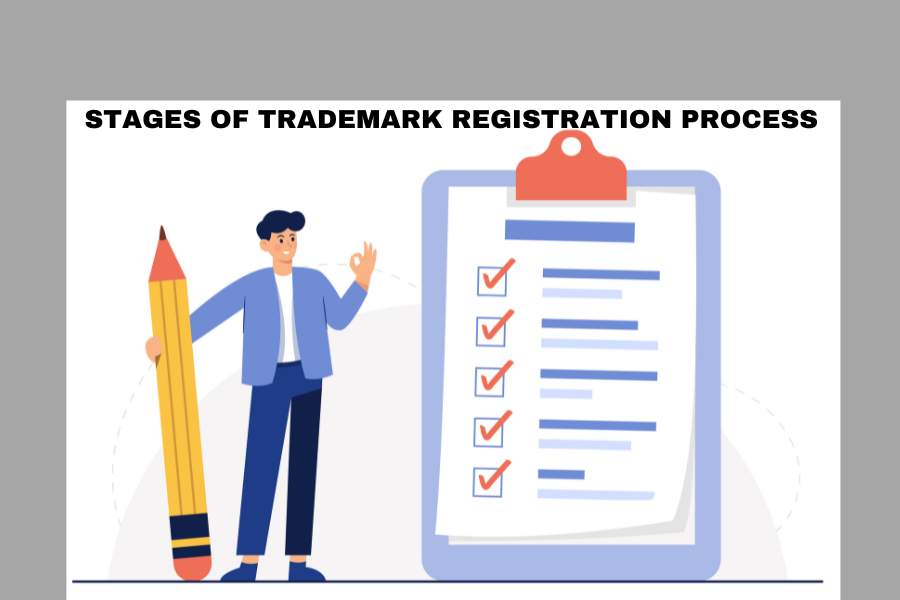Stages Of Trademark Registration Process

Gone are the days of monopolies in business. With few exceptions, individuals can now engage in a variety of business ventures. This has resulted in a highly competitive market, where there are numerous products that are similar to one another. This often leads to confusion amongst buyers, and some individuals take advantage of this by selling fake products.
To combat this issue, it has become necessary to register a trademark in India to authenticate a product and its true seller. Despite its importance, some individuals hesitate to register a trademark due to its perceived lengthy process. However, the trademark ministry has become more efficient and streamlined the trademark registration process, reducing the time it takes to register a trademark. Previously, it could take 15-18 months to register a trademark, but now it only takes 6-8 months if there are no objections. In this article, we will be going through the various stages involved in the trademark registration process.
Statuses of Trademark Registration
The trademark registration process involves several stages, including document collection and filing of the trademark application, processing under the Vienna Codification, Formality Check, and Examination. To ensure that the registration process goes smoothly, all of these stages are important.
Filing the application
Filing a trademark application process takes a bit of time. Generally, it takes 2-3 days. . The applicant can start using the “TM” symbol in conjunction with the brand name or logo mentioned in the application.
Vienna Codification
The Vienna Codification is another stage of trademark registration. In this stage, there’s the processing of figurative elements or logos. In this step, after processing a Vienna code (based on the Vienna agreement) is assigned to every Trademark. This code helps in conducting an internal trademark search of a logo and takes approximately 3-5 working days.
Formality Check Pass/ Fail
The Formality Check stage involves a review of the trademark application for missing documents and clerical errors. The trademark registry checks basic information such as the name of the applicant, details on the power of attorney, and supporting documents, if any. The status of the application changes to “Formalities Check Fail” if there are any deficiencies in the application.
Reply To Formality Check Fail
In the event of a Formality Check Fail, the applicant must file a reply within 30 days, addressing the queries raised in the report. Failing to file the reply within the specified time, can lead to the trademark registry abandoning the application.
Formality Check Pass
After passing Formality Check, the trademark application proceeds to the next stage, which is examination. During this stage, the trademark registry checks the brand name or logo against various sections of the Trademark Act. This process typically takes 7-10 working days.
Objection And Reply
Finally, the Objection and Reply stage involves a comparison of the trademark with other applications and registered trademarks. If the Trademark registry finds any similarities, they raise an objection. The applicant must file a reply to the objection within 30 days from receipt of the examination report. Failure to do so may result in the abandonment of the trademark application.
Hearing
In the hearing stage, the applicant has the opportunity to respond to objections raised by the trademark registry. Until a date for a hearing is scheduled, the status of the application remains as “ready for show cause hearing”. The date is assigned on a first-come-first-serve basis.
Accepted & Advertised
The trademark journal publishes the trademark after accepting it, provided that no objections are raised, the reply to objections is satisfactory, and the hearing officer is satisfied with the arguments presented. This stage is crucial as it allows any third party to raise opposition within four months of publication
Opposition
In case of opposition, the applicant must file a reply, known as a counter-statement, within two months from the receipt of the notice. Failure to do so results in the abandonment of the trademark application.
Opposition Hearing
The final stage is the opposition hearing, where both the applicant and opponent have the opportunity to argue their case. The hearing office can pass a decision in your favor, which leads to Trademark registration, or against you, which leads to application rejection.
Registration
After the trademark is published in the journal, the applicant is sent the certificate four months later provides no one raises any objections. However, if objections are raised, the applicant will only receive the certificate after a hearing officer makes a favorable ruling. At the end of the trademark registration process, the applicant will receive the trademark registration certificate within a month. With the certificate in hand, the applicant can legally use the “R” symbol alongside their brand name or logo. It is important to note that the certificate is only available for download online from the trademark portal and is not provided in physical form.
Conclusion
The trademark registration process can be time-consuming and complex, often taking anywhere from 6 to 8 months to complete. This timeline is dependent on the trademark registry’s current workload and can vary from case to case. To ensure a smoother process and avoid a prolonged registration period, it is important to choose a unique brand name. Our recommendation is to always seek professional assistance when applying for trademark registration for a successful and efficient process.



